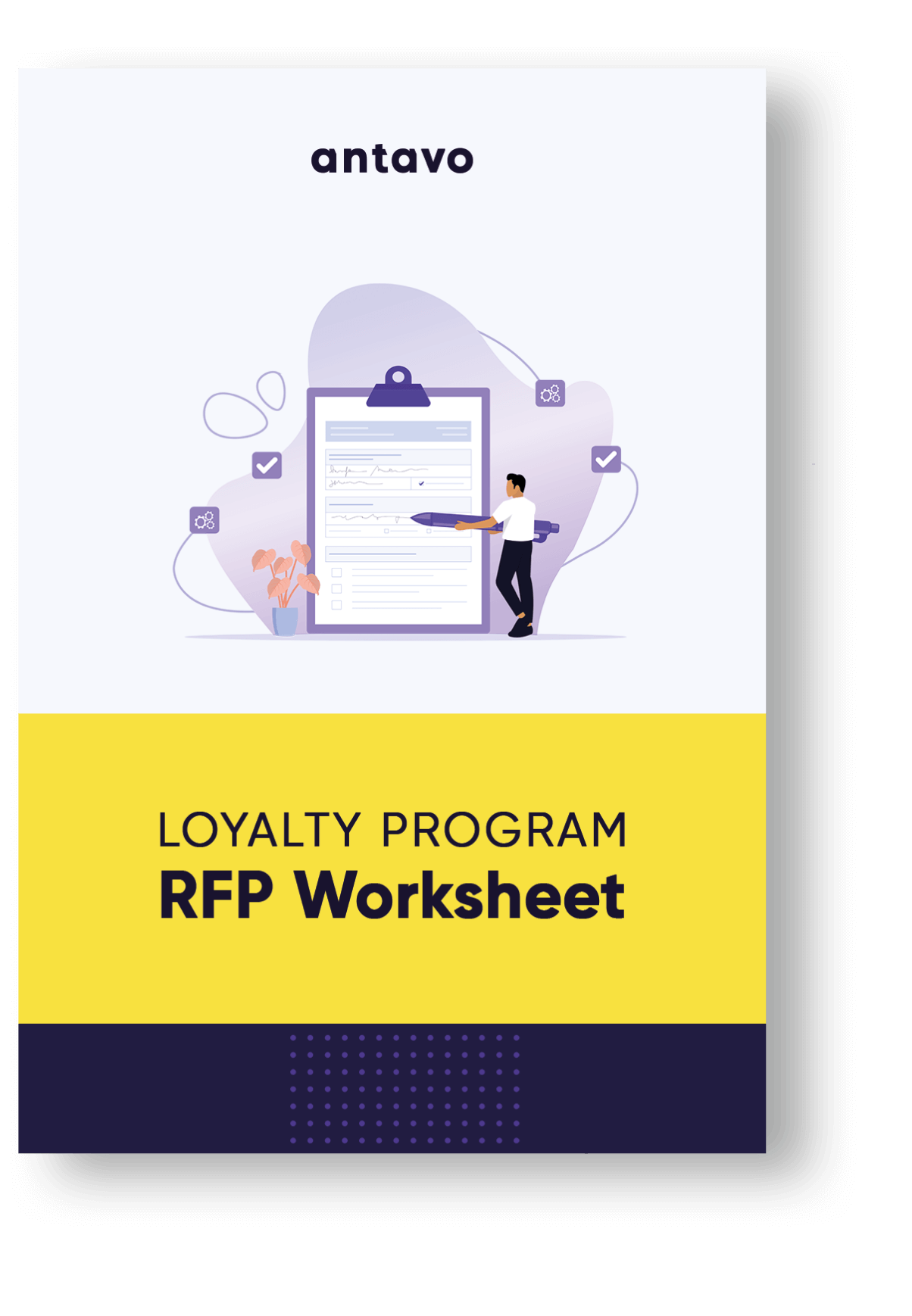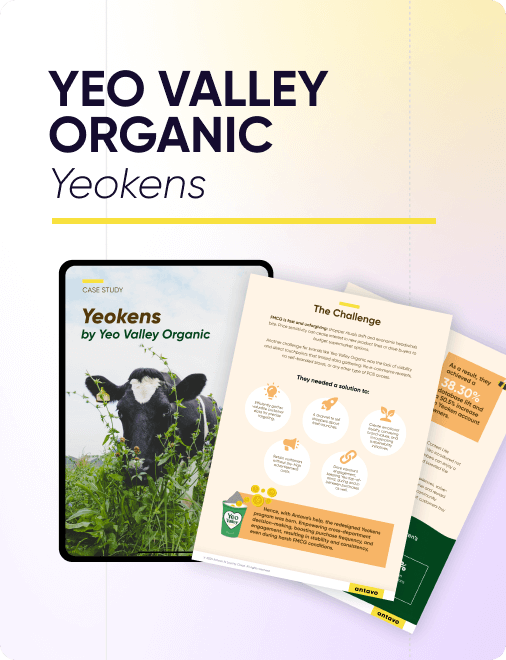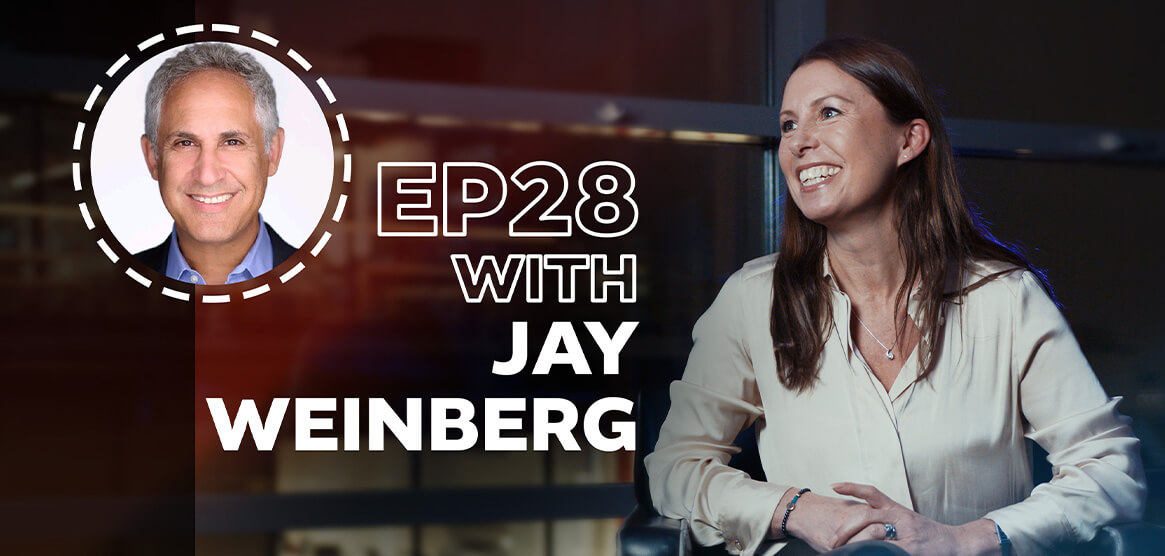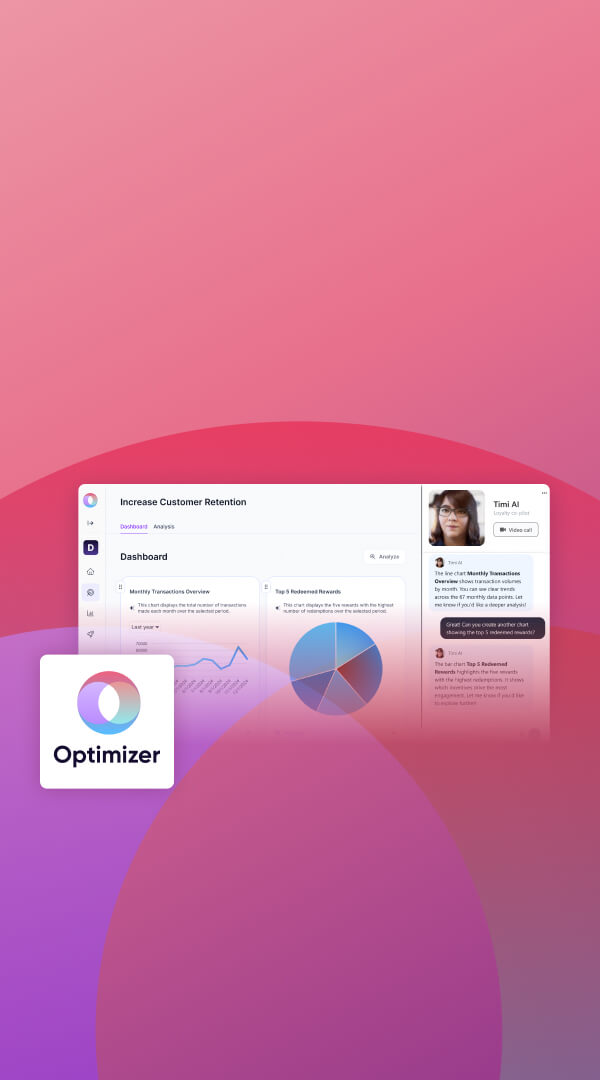During this week’s episode of Antavo’s Loyalty Stories video podcast, our expert guest is Jay Weinberg, Co-Founder and Partner at Ascendant Loyalty Marketing.
The interview for this podcast has been a valuable source for Antavo’s Global Customer Loyalty Report 2024. Make sure to download it for over 30 statistics on loyalty program trends.
During this episode, we have a chat about Rapid Rewards by Southwest Airlines. It happens to be Jay’s favorite loyalty program, due to its incredible perks and customer-friendly approach. Jay also highlights recent, and upcoming impactful trends in the loyalty industry, such as Web3 and machine learning.
Highlights from our conversation with Jay:
- A customizable platform is essential for effective strategy execution
- Key loyalty trends around the world (including Canada, Japan, and the Middle East)
- Why involving finance early-on is a must for a successful program kickoff
- The reason why Amazon once again leads the pack with Prime
Learn more:
- LinkedIn profile of Jay Weinberg
- Ascendant Loyalty Marketing website
- Learn more about Jay’s thoughts on Fuel Retail Loyalty Programs
- Book a demo with Antavo’s loyalty experts
Michelle
Hello and welcome to Loyalty Stories with Antavo. I’m Michelle Ellicott-Taylor, heading up the global partnership team. In this podcast Loyalty Stories, we dive into trends around customer loyalty and engagement, and we get to speak to some experts in this field to pick their brains and learn more about what’s in store for the next loyalty programs.
Today’s guest is Jay Weinberg, and he’s an expert in marketing strategy and loyalty. He’s a Co-founder and Partner at Ascendant Loyalty, and we’re very excited to have him on board and already be working with him as a partner. So Jay, welcome to today’s loyalty stories, and I’d like you to introduce yourself.
Jay
Thanks, Michelle. Again, my name is Jay Weinberg, and I am a Co-founder and Partner at Ascendant Loyalty Marketing. We’re a Chicago-based loyalty consulting firm that works all over the world, and we focus specifically and only on designing, developing, and managing loyalty marketing programs in a number of industries, mainly retail, hospitality. We work a lot with casinos and travel cruiseships.
We also do B2B, multi-level marketing, and a number of other areas that we’ve done work in. I’ve been doing this since about 1995. I started on a business, started a business in 1999 and in 2018 we connected with David Slavik and the two of us created a new brand called Ascendant Loyalty Marketing and we’ve been operating under that brand ever since.
Michelle
Oh, that’s great to get that background. And there’s obviously lots of experience there. So we’re looking forward to the thoughts that you’ve got to share with us today. And I always think it’s like a great way to get started, asking that like million dollar question, what is your favorite loyalty program and why?
Jay
That’s a great question and I like to ask that one too as well when we do stakeholder interviews with our clients, we start out with that one. My answer is Southwest’s Rapid Rewards, the Southwest Airlines loyalty program. I live in Chicago and Southwest is a hub here in Chicago, so I can pretty much get anywhere I want mostly nonstop.
So it makes sense for me to fly Southwest, although of course American and United are here as well in a big way. What I really like about Rapid Rewards as a loyalty marketer as well as a member is that they provide really excellent value. They have strong benefits for the higher tiers and what I like best about it is they actually listen to feedback and when they change their program typically, they make it more customer friendly.
It seems that every time I think of something with the rewards program that I’d like to change, two months later they’re coming out with that exact change. One example is I’m a frequent enough flyer that I have what’s called a companion pass, which means I can take one designated person with me for free whenever I fly.
Michelle
That’s good. Yeah, that’s great.
Jay
That’s a nice perk. Well, also, as an A-list member, when you board, Southwest doesn’t have assigned seats, so you board in a specific order. Obviously, the earlier you board, the better chance you’re gonna get to the seat that you want. So they always put me in the first boarding group automatically, because of my status.
However, my companion did not have that. So my son is a companion of mine. And here’s at the time, it’s a 10, 11, 12 year old kid who had to board much later than I did, or I had to wait and board with him, which really defeated the purpose of my A-list status. And lo and behold, they came out with, I didn’t complain about it. I complained about it to the gate agents, but I don’t know, maybe that did get through to the Rapid Rewards folks, but lo and behold, a few months later, they made a change that said that your companion can board with you.
So when I got number A18, my companion got number A19 right behind me, which was a really good benefit. So that’s just one example of changes that they’ve made and they’re very customer friendly there. So I’ve been loyal to them for a long time.
Michelle
Oh, that’s great to hear and good that they’ve made that change as well, especially when you’re thinking about flying with kids. That’s important, isn’t it? So, great. OK. And then it’s really interesting to know as well, obviously, with, I guess, the many projects that you’ve worked on. Like, what’s your favourite out of those? What’s the one that you’re most proud of? And can you say who that is? Give us more detail.
Jay
Well, yeah, I appreciate longevity and I like programs that have lasted. As I said, I’ve been in this business for over 25 years and designing and developing a hotel guest loyalty program that we did back in 2007 was really interesting and unique for the time because at that time, loyalty was all about points.
And this program, this program led with guest benefits. It was more about soft benefits and immediate rewards than it was about gathering points. It was very successful. It was managed extremely well, and it is still thriving today, 15, 16 years later, whatever it is. And I’m really proud of the work that we had done to put in to get that off the ground and started going and keep it running. It’s called the I Prefer program from Preferred Hotel Group.
Michelle
Oh, okay, I Prefer. Okay, well look out for that one. But that’s great to see, like you’ve said there, the, I guess the longevity around that and starting something and then seeing how that has evolved over this time.
Jay
Yeah, they did a really great job in both implementing the program as well as shepherding and managing that program through the years. They’ve got great staff and people over there and it was a wonderful opportunity for me.
Michelle
Well, I guess, yeah, talking about longevity and thinking about the last couple of years, what, I guess, what changes have you seen in recent years that have been like the big changes in loyalty?
Jay
Well, it definitely has changed in a number of ways in terms of automation and strategies and unique rewards. I think the biggest change in recent years is the move beyond points to more soft benefits, experiential rewards, more emotional loyalty.
Every assignment that comes our way, they say we don’t want a points program or we want this to be a lot stickier, or we want the more emotional benefits. Sometimes it’s straightforward and sometimes it’s not easy to do. It depends on the industry, it depends on the competition and what you can offer.
It creates a big challenge that has spawned strategies like personalization and partnerships. Because as I said, they’re not easy to create non- you know, rational points is a pretty easy thing to develop and implement. It’s, it’s pretty formulaic. It’s also ubiquitous and it’s also more rational as opposed to emotional.
So it, it’s, it doesn’t it doesn’t have that, real loyalty component, it has the deal loyalty component. We like real loyalty versus deal loyalty.
Michelle
Yes. Yeah, that’s a goo.
Jay
And real loyalty is much stickier. So we think that if we can find what we try and do with every assignment and with every client is to try and find those emotional drivers that are going to be truly sticky. And I think back to Southwest Airlines and what they do and how they provide value for me as a higher tier member.
Those are the things that keep me around. I have more points than I’ll ever use. So that’s not what’s keeping me there.
Michelle
Yeah, yeah, that’s a nice place to be. Okay, so that’s looking at, I guess, the changes that have happened over the recent years. And then what about, I guess, key trends, maybe two fresh ones that you see that we’ve got in the next couple of years that are coming.
Jay
I think these are going to be pretty obvious answers. The first one I would say is Web3. So I think Web3 tools and technologies are going to gain traction. I’m not sure it’s the right path for many companies or most companies, but it will be for some.
Michelle
Okay.
Jay
And it is definitely, whether it’s right or not, it is a main trend that is coming on, using blockchain for your loyalty backbone, cryptocurrency for rewards, NFTs in various capacities are getting, and those are getting more, all of this is getting more sophisticated. So I think that is a trend that’s gonna move forward pretty quickly and continue. Another one, right?
Michelle
Okay, yeah, yeah. That’s gonna be interesting to watch that happening with Web3. Like you say, it will be really good for some companies, for others it might not be the right way for them to move forward. But it’s definitely something to look out for.
Jay
Yes. Right, and it’s a big change. It’s a big change in mindset. It is obviously something that’s geared more towards a younger consumer than it is towards the baby boomer generation. And hopefully the adoption curve will be pretty quick in that. It will need to be.
And then the other is, I think everyone is talking about of course, is AI adoption. Probably integration of chatbots and loyalty, using chat GPT in some form or another, and then machine learning from model development and personalization are going to be the areas that I see and I’m hearing about and getting questions on more often.
Michelle
Yeah, that’s going to be a key focus for people. AI, there’s some really interesting things obviously already happening. But yeah, how that’s going to impact the how the Lorty campaigns are running. And I guess the automation associated to those as well. So, but great. Okay.
And then moving on from the trends, thinking about, I guess, when you’re looking at technology vendor, obviously as a consultant, you’re looking at the whole strategy that you’re building out for the customer, but what’s front of for you and like a sample of the customers in regards to the platform. Are people thinking about the integrations? Are they thinking about the ease of use, implementation? Is it something else, like how customizable it is? What are you seeing there?
Jay
I’m going to say customizable is probably the most important part because our philosophy is that the strategy should dictate the program and dictate the technology not the other way around. And so often we hear issues like well we want to do this but the technology won’t allow it. Or it’s going to take much more customization and configuration, and that’s gonna take time, that’s gonna take more money. We don’t have the stability. We don’t know how stable that’s going to be.
So having, I think, the most customizable technology is really an important component. That’s what I look for because I want the strategy to be able to be supported by the technology, not the other way around. So that’s a really important component.
Michelle
Great, thanks for sharing that. And then I wanted to have a think about how loyalty is different maybe across different regions and what’s your experience with that? Obviously you might have more of a focus with customers in North America, but I know you have experience working globally.
So do you see different trends or are there certain areas that are more interested in moving forward with a point space versus the non-transactional side of things? What do you see there?
Jay
Yeah, what I see is kind of a spectrum in terms of how loyalty programs are perceived and adopted in different regions. In the US, we are on the more front end of that curve, but I wouldn’t say we’re the most sophisticated country out there when it comes to loyalty programs. Canada probably leads the way.
And for example, we did some work in Japan and in the Japanese market, it’s very nascent at this point. Loyalty programs, there’s a few just, I mean, it’s almost back to the SNH green stamp, days in a way when it’s really not an emotional component to it at all and it’s just there are some point programs out there. It’s not as ubiquitous as it is in other areas of the world.
In areas like the Middle East, we see a lot more of conglomerate type programs as opposed to just single brand programs. So we see a lot more, whether it’s owned coalition, so one company, because I think out there you have, and as well as in South America, you see that there are companies that own various brands and they’re trying to put together a program.
We’re doing one actually in the Caribbean right now where there’s companies that own different types of brands in different types of industries. And you see they have developed and design developed and are managing private coalitions out there to keep their customers and expand on share of wallet for their customers from one industry to another.
We see that as a trend and a component in the Middle East mainly, as well as in South America. We haven’t worked in South America, but we’ve done a couple of jobs in the Middle East that are very much up that alley.
Michelle
That’s great. It’s really interesting to see how different, I guess, regions and cultures respond in different ways to different types of loyalty campaigns. Yeah. And then just thinking about the assignments that you’re working on, like, obviously, I guess in an old world, it was maybe just the loyalty and brand team that were working on this.
And then if you think about the CMOs are involved, but now it feels like there’s a lot more people wanting to get involved or needing to get involved with these assignments. So is it Head of Digital or is it the CEO? Who are you seeing that gets involved with being behind these assignments?
Jay
That’s a great question and we are definitely seeing an expansion because these programs touch so many. Now I’d say at the core we have our marketing teams and typically starting at the CMO, sometimes the CMO is very involved, sometimes not, but usually there’s someone in head as a head of loyalty, digital, e-commerce, any combination of those three is leading the project.
There are digital marketers involved. There are IT professionals on the team because there is integration with various systems, especially point of sale systems, loyalty management systems, and there are, there’s also in the finance team. We this is a program that is not a simple program it’s not a set it and forget it type of a program.
It has usually financial components Involves like liability so the finance team is an integral part of this In fact, one of the first questions we ask is to ensure that, that the finance team is involved, we ask that they can be involved right up front, right away. Because if you don’t have the backing and support of the CFO or an equivalent, then you have major headwinds to get your program launched.
Michelle
Yeah, yeah, definitely. I think that’s so important because we can get so creative with what we want to do, but if that buy-in internally in business case hasn’t been made from finance and procurement, that can be a blocker towards the end, can’t it? It’s much better to involve them from the beginning.
Jay
Very much so. And one of the most important components of a program, and something that I personally work on our team, is the financial models. Because that’s what really can show us how much something can be worth, and how we should structure the program strategically to provide that fulcrum of value.
What’s the apex in this program that we can get? So the financial part of it is really important. And then of course there’s also creative is involved in this program and customer service, the very, very important component of this program. Sometimes the CEO is involved personally, sometimes not, but it’s obviously very important to have the CEO’s blessing and an understanding of the program and what goes on.
We don’t want to develop a strategy and then have the CEO come in without a lot of context and rationale behind it and start making changes that may not necessarily be the most educated changes to a program.
Michelle
Yes, yeah. And then thinking about, I guess, all of those different teams that we’ve just spoken about, but looking at someone who’s just coming into loyalty, so they might be a graduate in their early 20s in a junior loyalty management position.
What advice, particularly because you’ve got such, you know, great insight and expertise in this space, like what kind of advice would you be giving them to aspire to get into that senior level in loyalty? What are the things they need to be thinking about with how they’re working to move up into say the director levels?
Jay
I think first of all, they need to understand the fundamentals of loyalty. They need to understand the value that it brings and the different components, all of the different areas that it hits, what it’s trying to do and how it affects change and incremental value, how it brings about incremental value. So all of those kind of loyalty 101 fundamentals they need.
And then secondly, I would say, look for where the puck is going. I don’t know, you guys don’t play hockey too much over in the UK, but there’s an old saying here. I think it was Wayne Gretzky said that, you wanna skate to where the puck is going, not to where it is now. So it’s basically understand where the market is moving. And we had talked a little bit about AI and Web3 as trends for the program for loyalty marketing.
So I would encourage people to really get on top of where these trends are, because these are areas that the business is moving, the industry is moving these ways, and there aren’t a lot of people who really understand that. So if you wanna get ahead and get ahead fast and get on top of this, understand the fundamentals of loyalty, and then look at the trends that are coming along, and become experts in one or more of those trends and how they integrate with loyalty. You may come up with something novel and unique and really affect the entire industry, as well as of course the company you work for.
Michelle
Yeah, it’s actually making a big impact. So that’s great. Thanks for sharing that. And I know we haven’t got long. We’re going to have to wrap up soon. But before we do, I was just thinking, you’ve obviously shared with us your favourite loyalty programme.
But just thinking from a surprise and delight perspective, is there something that you’ve been surprised with in loyalty? Is there a program you’ve seen that’s something a bit different?
Jay
I think, yes, there certainly has. When Amazon came out with their Prime program, obviously it’s a paid program, it was very novel and unique, and it provided such a value of free shipping, and it had so many amazing components to it, just like just all of the entertainment that comes along with that.
That’s probably more important. I’m not a big Amazon user in terms of getting packages to the house, but just the entertainment that is was really an afterthought. I mean, obviously they spent billions on it, but it wasn’t the main component of this loyalty program, but it is. So it’s amazing.
And the surprise to me, it’s not surprising that it was them because they are such a huge company and can do whatever they want, but it’s surprising that they have dictated how everybody else is doing things. Just like they did when the internet first came out and the way they designed their homepage became the defacto default, came the default for people to, how do you design the homepage with the navigation bar at the top and on the left and how things are set up.
That was done because everybody took their lead. And now everybody wants to do a program just like Amazon because they’re the leaders in it. So that was real surprising and quite effective.
Michelle
Yeah, yeah, that’s a great example and I think pretty much everyone is using Amazon, aren’t they? So it’s something that everybody can relate to but no, that’s great. Thank you so much, Jay. Thank you for your time today and all the great insights that you’ve shared and I’m sure our watchers and listeners are going to very much enjoy your content. So thank you.
Jay
Well, thank you, Michelle. This has really been a lot of fun and really appreciate the opportunity and ability to speak with you and, and Antavo. We’ve had a great relationship with Antavo, wonderful product and company, and I look for more great things.
Michelle
That’s great. Thanks so much, Jay. And thank you everybody for watching and listening. And if you’ve got any questions around loyalty, please come and visit us at antavo.com.
And if you’re looking for some ideas around loyalty concepts, don’t hesitate to reach out to Jay and his team at Ascendant Loyalty. Thank you very much.










